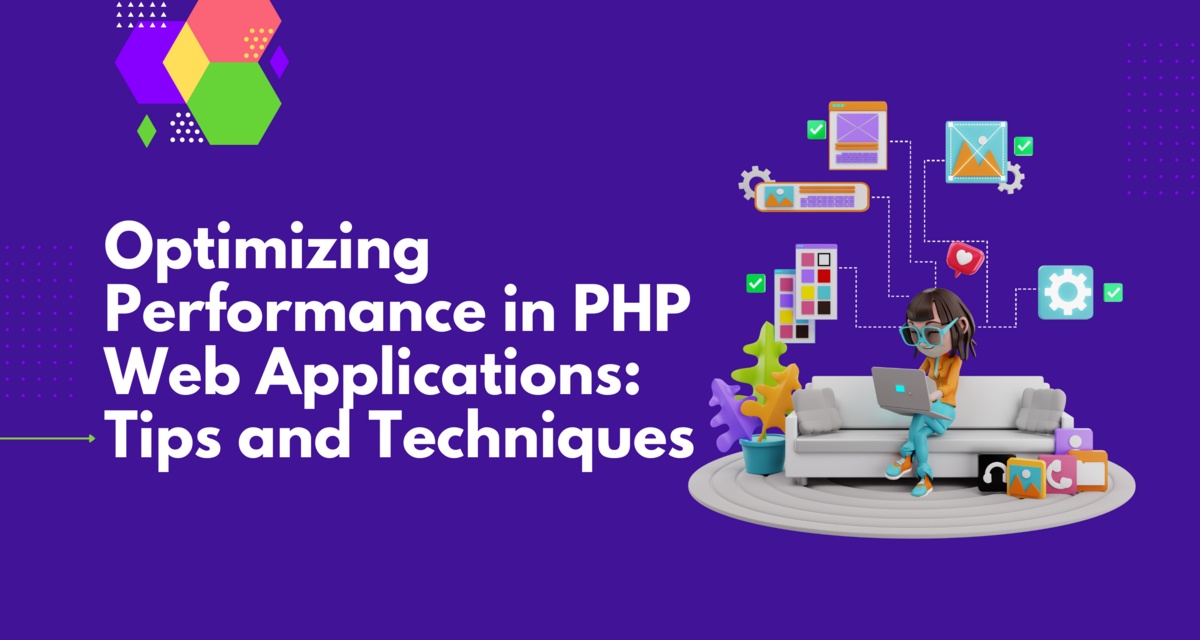PHP Web Applications enhance user experience and significantly affect search engine ranking and overall site success. Regarding PHP web applications, efficient performance optimization is a multifaceted task involving various aspects ranging from code optimization to server configuration. In this blog post, we will explore several tips and techniques to optimize the performance of PHP web applications.
Performance optimization is the process of enhancing the speed, responsiveness, and efficiency of a web application. This involves improving the execution speed of PHP scripts, reducing server response time, minimizing database queries, and optimizing front-end resources such as HTML, CSS, and JavaScript.
-
Code Optimization
Efficient code lies at the heart of performance optimization. Writing clean, optimized PHP code can significantly improve the speed and responsiveness of your web application. Here are some techniques to optimize PHP code:
- Minimize Database Queries: Reduce the number of database queries by optimizing SQL queries, utilizing caching mechanisms like Memcached or Redis, and employing techniques like eager loading in ORM frameworks.
- Use Efficient Loops: Opt for efficient loop constructs such as for each instead of for loops wherever possible. Additionally, avoid nested loops that can lead to performance bottlenecks.
- Leverage PHP Built-in Functions: PHP provides numerous built-in functions optimized for performance. Utilize functions like array_map(), array_filter(), and str_replace() instead of reinventing the wheel with custom implementations.
- Optimize Autoloading: Use efficient autoloading mechanisms such as Composer's PSR-4 autoloading to autoload classes only when necessary, reducing overhead.
-
Server Configuration
Server configuration plays a crucial role in PHP application performance. Optimizing server settings can significantly improve response times and overall application speed. Consider the following server configuration tips:
- Enable Opcode Caching: Utilize PHP opcode caching extensions like OPcache or APC to cache compiled PHP bytecode, reducing the need for script recompilation and improving execution speed.
- Optimize PHP Configuration: Fine-tune PHP configuration settings such as memory_limit, max_execution_time, and realpath_cache_size based on the specific requirements of your application to strike a balance between performance and resource consumption.
- Utilize Content Delivery Networks (CDNs): Offload static assets such as images, CSS, and JavaScript files to a CDN to reduce server load and improve asset delivery speed by serving content from geographically distributed servers closer to users.
- Implement Gzip Compression: Enable Gzip compression to compress web content before transmitting it to clients, reducing bandwidth usage and improving page load times, especially for text-based assets.
-
Database Optimization
Database optimization is critical for PHP web applications that heavily rely on database interactions. You can significantly enhance application performance by optimizing database queries, schema design, and Indexing. Here are some database optimization techniques:
- Optimize SQL Queries: Ensure that SQL queries are well-structured, utilize appropriate indexes, and avoid unnecessary joins and subqueries. Analyze query performance using database profiling tools and optimize queries accordingly.
- Normalize Database Schema: Follow normalization principles to design efficient database schemas that minimize data redundancy and improve query performance. Avoid over-normalization or denormalization unless necessary for performance reasons.
- Use Indexing Wisely: Identify frequently queried columns and create appropriate indexes to speed up data retrieval operations. However, be cautious not to over-index, as excessive Indexing can degrade write performance and increase storage overhead.
- Utilize Database Caching: Implement database caching techniques such as query or result caching to store frequently accessed data in memory, reducing the need for repeated database queries.
-
Front-End Optimization
Optimizing front-end resources such as HTML, CSS, and JavaScript is essential for improving page load times and enhancing user experience. Here are some front-end optimization techniques:
- Minify and Concatenate Assets: Minify CSS and JavaScript files to reduce file sizes and concatenate multiple files into one file to minimize the HTTP requests required to load assets.
- Leverage Browser Caching: Set appropriate cache-control headers to instruct browsers to cache static assets locally, reducing the need for repeated downloads on subsequent visits.
- Use Asynchronous Loading: Load non-essential resources such as analytics scripts or social media widgets asynchronously to prevent them from blocking the rendering of critical page content.
- Optimize Images: Compress and optimize images to reduce file sizes without compromising visual quality. Modern image formats like WebP were supported to improve compression efficiency further.
Conclusion
Optimizing performance in PHP web applications is a continuous process that requires a holistic approach encompassing code optimization, server configuration, database optimization, and front-end optimization. By implementing the tips and techniques discussed in this post, you can enhance your PHP web services’s speed, responsiveness, and scalability, resulting in a better user experience and improved overall performance. Regularly monitor performance metrics and fine-tune your optimization strategies to adapt to changing requirements and evolving technologies.


No comments yet